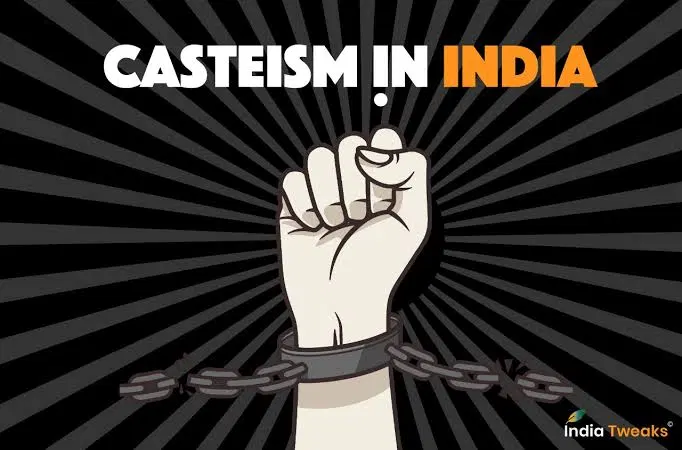By Vaidehi Gautam^
TRIGGER WARNING: Mentions of suicides and caste-based discrimination.
Whenever any conversation around caste takes place, it is usually attributed to the rural and educated domains of India where the ingrained bias of the people regarding caste identities still persists. However, on the question of urban India and casteism within those spaces, it is vehemently denied that urban educated spaces do not “see” caste at all. Article 17 of the India constitution prohibits untouchability, however a lack of push towards the abolition of the caste system has led to similar manifestations of casteism and untouchability in a myriad of ways and forms. A clear pattern of deaths by suicides, college expulsions, faculty resignations in premier institutions of education, the beacon of modernity and urbanised ethos, goes on to bust the myth of educational spaces being caste-free in the way they function. This article attempts to trace the trajectory of casteism that is rampant in highly acclaimed educational institutions of Indian, in order to articulate the hypocrisy of the said institutions to be educational while participating or facilitating such practices at large.
The month of July 2021 began with the resignation of an assistant professor from IIT Madras, citing discrimination of the basis of his caste identity. Dr Vipin P. Veetil, PhD, was an economics professor in the Department of Humanities and Social Sciences. In his letter addressed to the faculty members, Dr Veetil cited incidents of caste-based exclusionary practices. The irony of such an incident taking place in a department that is dedicated to humanities and social sciences, of all subjects, shows how toxic the situation is within these institutes. This incident, unfortunately, is not something that has happened for the first time.
Going back as far as 2008, about six Dalit students pursuing their PhD from University of Hyderabad were reported to have died by suicide as a result of caste-based discrimination at the hands of their peers as well as the faculty.
In 2015, IIT Roorkee expelled 73 students in their first year from various engineering programmes and out of those students, about three-fourth belonged to Dalit backgrounds. Upon the investigation conducted by National Commission on Dalit Human Rights (NCDHR), it was found that the students’ poor performance in the first semester was a result of neglect from the faculty after knowing their caste identities, dysfunctional SC/ST Cell for grievance redressal, lack of remedial programmes and institutional support to facilitate students coming from non-elite marginalised sections of the society, among other things.
In April 2021, Seema Singh, an IIT Kharagpur professor was recorded using casteist slurs at her students while taking an online class. She is a professor of English from the Department of Humanities and Social Sciences, yet another example of rampant casteism persisting in spaces where awareness regarding such social evils is read and analysed. However, this incident takes the irony a notch higher with the fact that the same professor had worked on a paper concerned with social inclusion and subaltern narratives, a subject that concerns critical analysis of caste and other marginalized identity narratives within a society.
The scenario of representation and recruitment of faculties belonging to the SC, ST and OBC backgrounds in IITs and IIMs does not produce a good picture. The data submitted in Parliament by the Ministry of Human Resources and Development in December 2018 depicted that out of 8856 sanctioned faculty strengths, 4876 are from General category, 329 are OBCs, 149 are SCs and a mere 21 are from the ST community. In effect, across 23 IITs, including new and old, only 9 per cent of the current faculty are either SCs, STs or OBCs. Of the 23 IITs, 15 — including the IITs at Mumbai, Kanpur and Kharagpur — have no ST faculty at all. IIT Mandi has no SC faculty while two other IITs — at Goa and Dharwad — have no faculty belonging to the OBC category. SCs and STs are just 2.5 per cent of the total faculty pool.The institutes report a lack in promising candidates for fulfilling the vacancies meant for reserved categories. This statement however invisibilises and whitewashes the inherent bias of the recruiting authorities as well as the systemic difficulties faced by aspirants from Dalit castes while accessing the facilities required to be eligible for such posts. The myth regarding merit being associated with the upper castes is very much prevalent in these institutions which facilitate a lack of caste diversity in higher positions. Despite the guidelines issued in 2013 by University Grants Commission (UGC) for the ‘Promotion of Equity in Higher Education Institutions’, measures to safeguard the interests of students without any discrimination or bias pertaining to their caste identities, most universities have been observed for their lack of implementation of these guidelines. A lack of robust mechanism and representation of Dalit identity in higher positions of power, along with a clearly existent ideal of caste supremacy within Upper Caste communities are some of the many reasons why prestigious institutions carry with themselves the disappointing reality of discrimination and harassment on the social justice front.
Vaidehi Gautam is currently pursuing her master’s degree in Gender Studies from Ambedkar University Delhi. She is interested in politics, public policy, gender, pop culture, and loves to stay caffeinated and revisit basic mathematics from her school days. Presently she is interning with kractivist.org

Leave a Reply